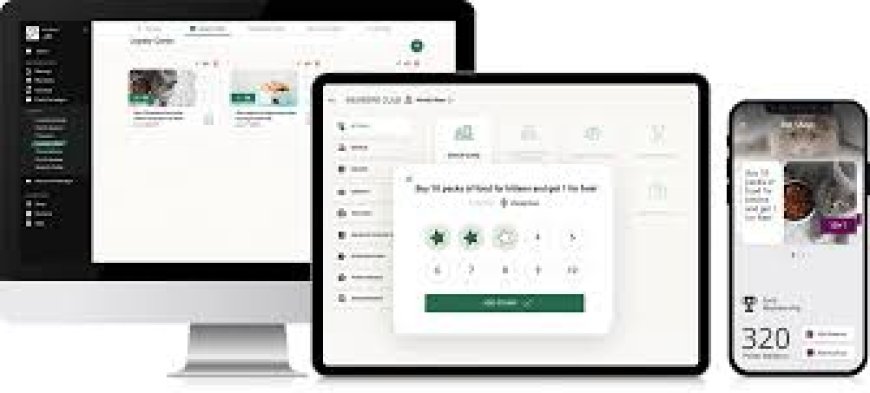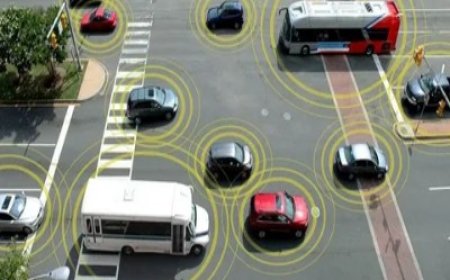Digital Loyalty Programs for Small Businesses: Boost Customer Retention and Revenue

In todays competitive market, keeping customers happy and coming back is more important than ever. Small businesses face tough rivals, so finding new ways to build loyalty makes a big difference. digital loyalty programs for small businesses are transforming how small shops, cafes, and local stores connect with customers. These programs not only make customers feel valued but also help boost sales and grow your business.
Recent data shows that over 70% of consumers prefer shopping at stores with a loyalty program. Plus, businesses using digital rewards see a 35% increase in repeat visits. More small businesses are shifting from paper punch cards or simple discounts to digital options. Why? Because digital solutions grow faster, are easier to track, and let you personalize offers for each shopper.
What Are Digital Loyalty Programs? An Overview
Definition and Core Components
Digital loyalty programs are electronic systems that reward customers for shopping at your store. Unlike old-school punch cards, these programs use apps, text messages, or websites. When customers buy, they earn points, discounts, or special rewards automatically. Common features include point systems, digital coupons, and personalized offers based on buying habits.
Benefits for Small Businesses
Running a digital loyalty program costs less than printing paper coupons or managing paper cards. You don't have to worry about lost cards or manual tracking. Digital tools collect data on what customers buy, helping you send them targeted deals. Customers enjoy quick, easy rewards, making shopping more fun and personalized. Over time, these programs turn occasional shoppers into loyal fans.
Types of Digital Loyalty Programs
Here are some popular options small businesses use:
- Points-based programs:Customers earn points with every purchase, which they can redeem for discounts or freebies.
- Tiered loyalty schemes:Offers rewards based on levels, encouraging bigger or more frequent purchases.
- Referral and social media rewards:Customers get rewards for referring friends or sharing your business online.
Key Features and Technologies Behind Successful Digital Loyalty Programs
Mobile App Integration
Most customers carry their phones everywhere. Using a mobile app makes tracking rewards super easy for both you and your customers. Apps can send push notifications about deals or remind customers about points. For example, a local pizzeria might send a message when a customer is close to earning a free pizza.
Data Analytics and Personalization
Digital programs collect data on buying habits. When you see what your customers prefer, you can send personalized deals. If someone always buys coffee on Monday, offer a special discount that day. This creates a feeling of relevance and makes customers more likely to return.
Seamless Omnichannel Experience
Customers shop online and in-store. A good digital loyalty system combines both. For example, a customer could earn points whether they shop on your website or walk into your shop. Keeping rewards consistent across channels keeps customers engaged and loyal.
How Small Businesses Can Implement Digital Loyalty Programs
Choosing the Right Platform
Start by finding a system that fits your budget. Some programs are free, while others charge a monthly fee. Look for software that's easy to set up and grow with your business. Popular options include Square Loyalty, FiveStars, and Belly.
Designing an Effective Program
Set clear goals. Do you want more repeat visits or bigger orders? Offer rewards that motivate customers without hurting your profit. Free items, discounts, or exclusive access are all good choices. Make sure your rewards are meaningful enough to keep customers coming back.
Promoting the Program
Tell customers about your new loyalty scheme using signs, social media, and emails. Give an extra push for new sign-ups with small bonuses. Train staff to explain the benefits during checkout. The easier it is for customers to join, the faster it will grow.
Measuring Success and Making Adjustments
Track how many customers use the program, redemption rates, and how much they spend. Use feedback from your customers to improve. If certain rewards arent working, change them. Keep testing and adjusting to keep your program fresh and effective.
Best Practices for Maximizing Loyalty Program Impact
Personalization and Customer Segmentation
Group customers based on what they buy. Send targeted offers to each group. For example, customers who visit weekly might get a special reward for regular visits. Personal touches motivate customers to stick around.
Incentivizing Referrals
Encourage loyal customers to bring friends. Offer rewards for each referral. A simple "Bring a friend, get a free treat" can turn happy customers into ambassadors for your business.
Maintaining Engagement
Keep your program exciting. Send updates about new rewards or exclusive deals. Use gamification, like badges or levels, to motivate ongoing participation. Making the program fun keeps customers interested longer.
Compliance and Data Security
Always respect customer privacy. Follow laws like GDPR and keep data safe. Being transparent about what you collect and how you use it builds trust. Customers are more likely to stay loyal when they feel secure.
Real-World Examples of Successful Digital Loyalty Programs
Case Study 1: Local Coffee Shop Chain
They introduced a mobile app where customers earned points for every dollar spent. After a few months, visits increased by 20%. Customers loved earning rewards easily and felt more connected to the brand.
Case Study 2: Boutique Retail Store
A small shop created a tiered rewards program combined with social media sharing. Customers earned bigger rewards for higher tiers and shared their purchases online. This brought in new buyers and boosted sales by 15%.
Lessons Learned
Keep your program simple, relevant, and personal. Regularly update rewards and listen to your customers feedback. A loyalty program isnt just a gift; its a way to build lasting relationships.
Conclusion
Digital loyalty programs are vital for small business growth. They turn occasional buyers into loyal customers by making shopping more rewarding. Pick a platform that fits your needs, and craft a Loyalty program for small business that values your customers. Use data to personalize offers and stay connected through rewards and fun incentives. Remember, start small, track results, and always look for ways to improve. A smart loyalty program isnt just about rewards its about creating loyal fans who keep coming back.
Related Posts
Ford AOD Transmission
inezofrank3 Jul 17, 2025 9
Charting a New Course: Book Boats Now and the Future of...
ferrytales Jul 17, 2025 51









































